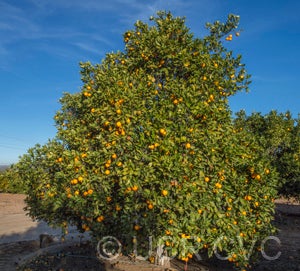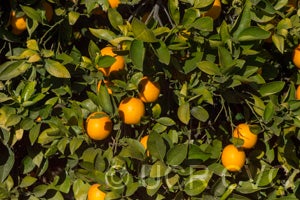Citrus sinensis (L.) Osbeck RUTACEAE
CRC 2602
PI 539596
VI 843 (Different source)
Source
Received as budwood from USDA, Sacaton, Arizona, 1936.
Parentage/origins
Originated as a seedling of Florida origin in the orchard of Daniel Diller near Phoenix and was selected in 1910 and introduced about 1920.
Rootstocks of accession
Carrizo citrange
Season of ripeness at Riverside
January to March
Notes and observations
A Diller orange is described in TCI, Vol. I, pp 458,where it is spelled Diller. When this accession arrived at the Citrus Variety Collection it was originally spelled 'Dillar', but it seems clear that it is the same accession as 'Diller'.
2/8/1988, EMN: Only 3 fruits but appears to be a typical mid-season, seedy sweet orange.
1/20/1989, EMN: A common mid-season sweet orange. Appears to be about average in all respects; may be slightly less seedy than most sweets.
Description from The Citrus Industry Vol. 1 (1967)
"Fruit small to medium, oblong to slightly ellipsoid; seeds comparatively few. Color bright orange. Rind medium-thick and moderately pebbled. Flesh well-colored, juicy; flavor good. Early in maturity.
Tree moderately vigorous; short, thick, upright-growing branchlets and leaves; productive under desert conditions. Said to be above average in cold tolerance.
This Arizona variety originated as a seedling of Florida origin in the orchard of Daniel Diller near Phoenix and was selected in 1910 and introduced about 1920. It soon became popular as an early variety in the Salt River Valley, where the 1965 planting was said to be about 1,000 acres."
Availability
A different budwood source is commercially available in California through the Citrus Clonal Protection Program. Click here to order budwood.
USDA Germplasm Resources Information Network page for Dillar sweet orange.


